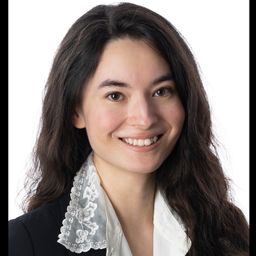Origins of retinal nerve fiber layer thinning in Birdshot chorioretinopathy
Mon statut pour la session
Author Block: Mélanie Hébert 1, Ryan Hendrick2, Keith Perry2, Mohammed Al-Kaabi3, Anna Polosa3, Marie-Josée Aubin3. 1Hôpital Saint-Sacrement, CHU de Québec - Université Laval, 2Université de Montréal, 3Centre universitaire d'ophtalmologie, Hôpital Maisonneuve-Rosemont.
Author Disclosure Block: M. Hébert: Funded grants or clinical trials; Name of for-profit or not-for-profit organization(s); Bayer, Fighting Blindness Canada, Vision Health Research Network. Funded grants or clinical trials; Description of relationship(s); Research funding, Research funding, Research funding. R. Hendrick: None. K. Perry: None. M. Al-Kaabi: None. A. Polosa: None. M. Aubin: Funded grants or clinical trials; Name of for-profit or not-for-profit organization(s); Vision Health Research Network. Funded grants or clinical trials; Description of relationship(s); Research funding.
Abstract Body:
Purpose: To investigate factors influencing retinal nerve fiber layer (RNFL) thinning in patients with Birdshot chorioretinopathy (BSCR) and determine yearly rate of RNFL loss.
Study Design: Retrospective cohort study
Methods: Patients with BSCR diagnosed since 1986 and followed by the uveitis service of the Centre universitaire d’ophtalmologie - Hôpital Maisonneuve-Rosemont were considered for inclusion (n=77). Patients needed to have RNFL measurements in the early follow-up period (i.e., first ten years of follow-up) to be included in this analysis (88 eyes of 44 patients). Difference between initial and final RNFL measurements was compared using Wilcoxon signed-rank test. A generalized linear mixed model was produced to predict final RNFL thickness accounting for the correlation between fellow eyes and for relevant covariates, including initial RNFL measurements, initial intraocular pressure (IOP) measurements, optic nerve edema at presentation, IOP-lowering treatments, periocular or intraocular corticosteroids, and duration of follow-up.
Results: Median [Q1, Q3] age at diagnosis was 54 [46, 60] years and there were 20 (45%) female patients. Median visual acuity at presentation in logMAR was 0.62 [0.54, 0.80] and there were 16 (18%) eyes with optic nerve edema at presentation. Initial RNFL thickness were 108 [90, 125] μm, while final RNFL thickness were 95 [85, 109] μm (p<0.001). IOP-lowering treatments were initiated in 38 (43%) eYes, including 2 eyes undergoing a laser treatment (e.g., selective laser trabeculoplasty), 2 eyes undergoing a stent procedure, and 6 eyes undergoing trabeculectomy. Periocular or intraocular corticosteroids were initiated in 28 (32%) eyes and immunosuppressants were initiated in 38 (86%) of patients. Median follow-up between initial and final RNFL measurements was 2.6 [1.4, 3.7] years.In the generalized linear mixed model, initial RNFL thickness (β = 0.397, 95% confidence interval (CI): 0.309 to 0.485; p<0.001) and duration of follow-up (β = −3.984, 95% CI: −6.271 to −1.697; p<0.001) were significantly associated with final RNFL thickness after correcting for age at diagnosis, initial IOP, initial optic nerve edema, IOP-lowering treatments, and corticosteroid injections.
Conclusions: Patients with BSCR lose RNFL thickness at an accelerated rate with an annual loss of approximately 4 μm. Part of this loss may be caused by atrophy following optic nerve edema, but an independent loss caused by the underlying BSCR is likely. Whether this translates into functional visual field losses is still to be determined. Clinicians should be wary of RNFL loss at presentation and follow-up in BSCR patients; optic nerve edema and IOP should be treated accordingly.
